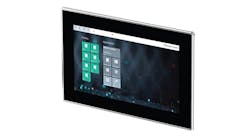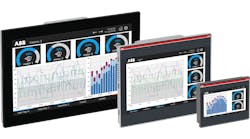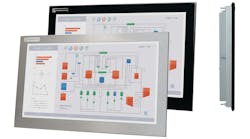The hodge-podge of controls at the wastewater plant were the last to be migrated to a DCS platform. Back then, wastewater processing didn’t make any money for the enterprise—it was purely a cost. And, while the cascade of separators to flotation units to aeration basin/digesters to sand filters and, ultimately, to the outfall, progressed slowly by comparison, the unit supervisor was still uneasy about running it all from DCS graphics. As we finished cutting the plant over and started to demo the panel, he appealed to us to save the panel graphic. Looking at little 21-in. screens—CRTs in that day—he was afraid his operators would lose sight of how everything was interconnected.
If you’re old enough to remember when HMI was the less gender-neutral MMI, you probably recall when the panelboard was a vast wall of faceplates and recorders, and maybe a console where individual temperatures could be displayed by flipping toggle switches. Above the panel board was a two-dimensional schematic or panel graphic, a custom pictorial that depicted the major vessels, columns, heaters and reactors, and incorporated a select number of lighted boxes for showing specific alarms in the equipment affected. The feedstocks started at the far left, and one could follow the path of the process all the way to product storage. If you had no mental model of how raw materials made their way from crude feed to refined products, there it was—you need only look up on the wall. The senior operators who “ran the board” could scan the wall and spot any problem children that were deviating from normal. Whether you were making chemicals or electricity, or refining crude oil, this was the state-of-the-art HMI.
Immersed in the age of the microprocessor and highly configurable operator graphics, we’re trying to recapture some of the panel graphic awareness of the past. For decades, we have transitioned operators from the holistic but primitive panel board to staring at CRTs, and now flat screens and projections on the far wall. Before controls engineers grasped it, operations folks expressed qualms about how the new reality was going to work. A decade or two into the new age of computer-based HMI, engineers began to come to their senses about what made an effective interface. From alarm rationalization (we were heedlessly indulgent in the creation of alarms when they became “free”) to gray-scale graphics that only use color for alarms, a new science of operator interface design has evolved. Recommendations and best practices have given way to standards, like ISA101. In a way that harkens back to the panel days, graphical interfaces favor analog representations of numbers and digital data—cartoon-like facsimiles of gauges, thermometers, bar graphs and recorders.
The coming and much-hyped tsunami of digital information is promising to grant the end user unprecedented insights into the state of the process. As we connect with more device intelligence via HART, wireless and fieldbus, do we know how to craft it so it’s informative (information in context) and not noise? Does the operator on shift need to know that a steam trap is malfunctioning, a compressor is losing efficiency, an instrument enclosure is cold, or that a heat exchanger is fouling? If you answered yes or no, I’d argue you’re wrong. In my world at least, the real answer is, it depends.
While the evolving standards and best practices have a lot to say about how to display information to the operator—e.g., don’t go crazy with color, avoid black backgrounds, show numerical values graphically instead of displaying numbers, make sure your color scheme is consistent in its meanings across all graphics, and so on—it doesn’t offer much guidance as to what should be on the operator interface, especially the overview display that’s intended to function like the old panel graphic.
The pioneers of operator interface—like the members of the Center for Operator Performance —are still exploring best practices for overview graphics. Like trying to write a procedure for how fighter pilots should behave in a dogfight, it defies standardization. The wastewater treatment supervisor wanted his operators to think and visualize beyond the digital keyhole of insight we could provide with instruments and graphics. The HMI should not only accommodate this, but also stay out of the way of operators’ comprehension of the state of the process.






